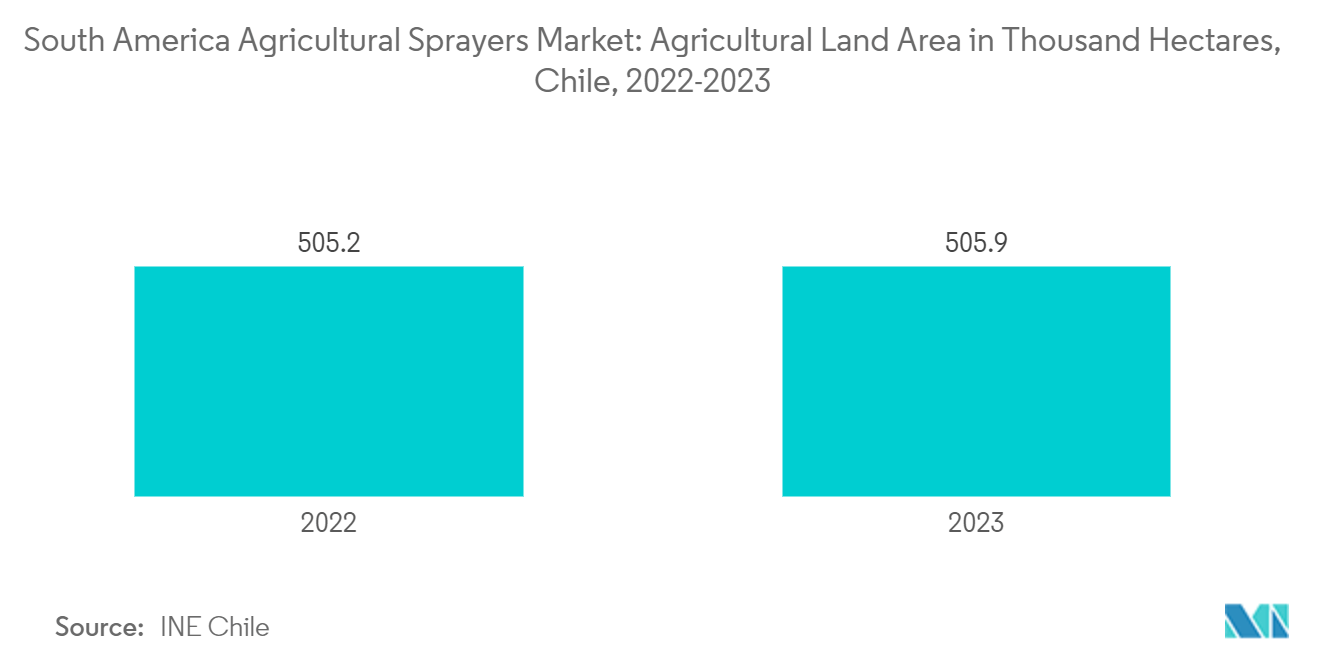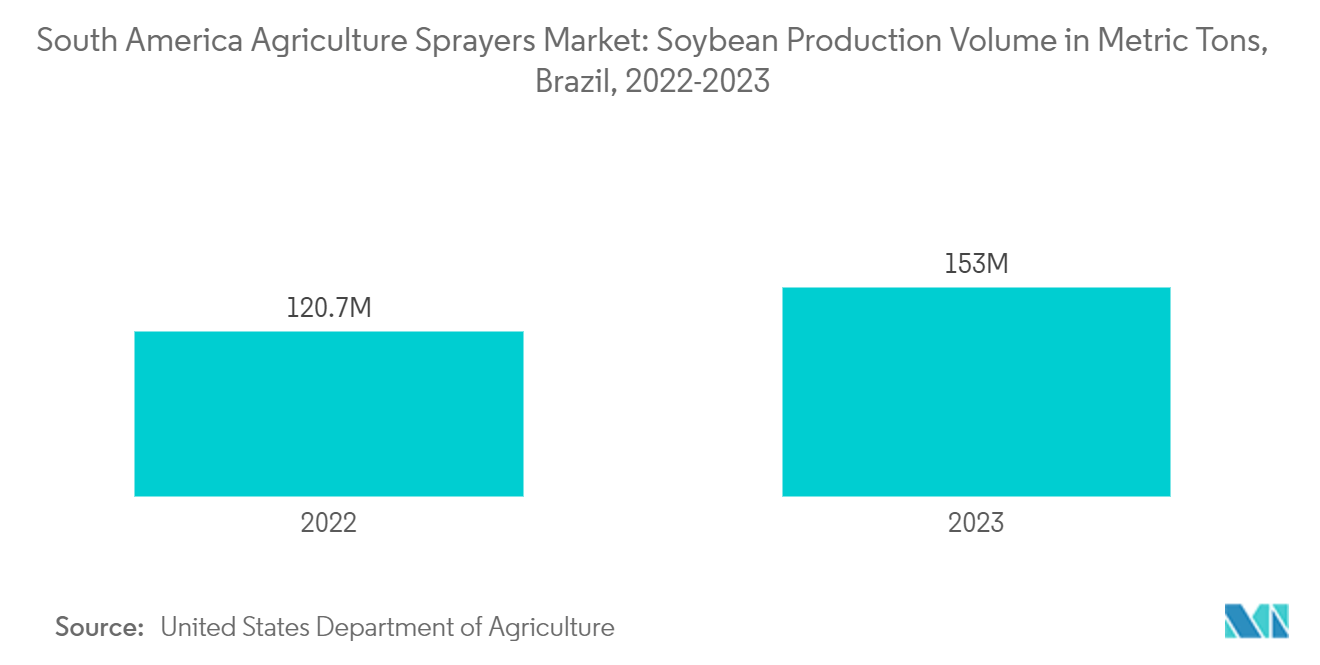Market Trends of South America Agricultural Sprayers Industry
Growing Farm Sizes Drive Adoption of Agricultural Sprayers
South American agriculture has been characterized by small and medium-sized family farms managing their land and capital. However, in recent decades, countries like Argentina and Brazil have witnessed a trend toward farm consolidation and the emergence of large corporate farming structures. This shift is driving a preference for farm automation equipment to reduce labor costs and improve efficiency. The increasing farm sizes, aimed at enhancing profitability through the use of advanced agricultural sprayers, are anticipated to stimulate market growth in the coming years.
According to INE Chile, the agricultural land area in Chile increased from 505.2 thousand hectares in 2022 to 505.9 thousand hectares in 2023. Similarly, the Brazilian Institute of Geography and Statistics reported that the planted area for agricultural production in Brazil reached 91.1 million hectares in 2022, up from 86.6 million hectares in 2021. This increase in agricultural land area has significantly boosted the adoption of agricultural sprayers. As farms expand, the need for efficient and effective spraying solutions becomes more critical. Larger fields require advanced, high-capacity sprayers to cover extensive areas quickly and uniformly. This expansion drives farmers to seek technologies that maximize productivity, such as modern sprayers equipped with GPS and AI technologies, which ensure precise application of pesticides and fertilizers, reducing waste and improving crop yields. Additionally, the labor savings provided by these advanced sprayers make them an attractive option for large-scale farms facing labor shortages.

Brazil Leads the South America Agricultural Sprayer Market
Brazil's focus on sustainable agrochemical management has driven demand for advanced mechanical sprayers in recent years. The market shows a preference for self-propelled sprayers featuring high-tech capabilities, including automatic section control, data transmission, and direct injection systems. These technologies ensure the precise application of agricultural chemicals. Brazil's vast agricultural areas, particularly in states such as Mato Grosso and Parana, necessitate efficient, high-capacity spraying equipment.
Brazil ranks among the world's top producers of corn and soybeans. The United States Department of Agriculture reports that in 2023, Brazil produced 153.1 million metric tons of soybean and 122.1 million metric tons of corn, compared to 120.7 million metric tons and 109.4 million metric tons respectively in 2022. These crops are predominantly cultivated on large-scale farms, necessitating high-capacity sprayers for efficient coverage of extensive areas and timely application of pesticides and fertilizers. Advanced sprayers, including air-assisted and precision models, provide comprehensive coverage and penetration, particularly in dense crop canopies. As corn and soybean plants mature, their canopies become denser, challenging conventional sprayers to reach all plant parts. Air-assisted sprayers enhance droplet deposition within the canopy, ensuring pesticides and fertilizers reach the lower plant sections. These factors are projected to drive the sprayer market growth in Brazil in the coming years.
Additionally, the Brazilian government has been promoting the adoption of advanced sprayers among farmers to boost crop production. In 2021, Brazil introduced its farm subsidies funding bill, commonly known as the Crop Plan, which primarily focuses on loans for machinery purchases. The government increased the program's total budget by 6.1%, amounting to USD 44.2 billion. Of this, USD 10.6 billion is allocated for subsidized loans for agricultural machinery. These measures are anticipated to motivate Brazilian farmers to invest in advanced farm sprayers to improve crop yields.


